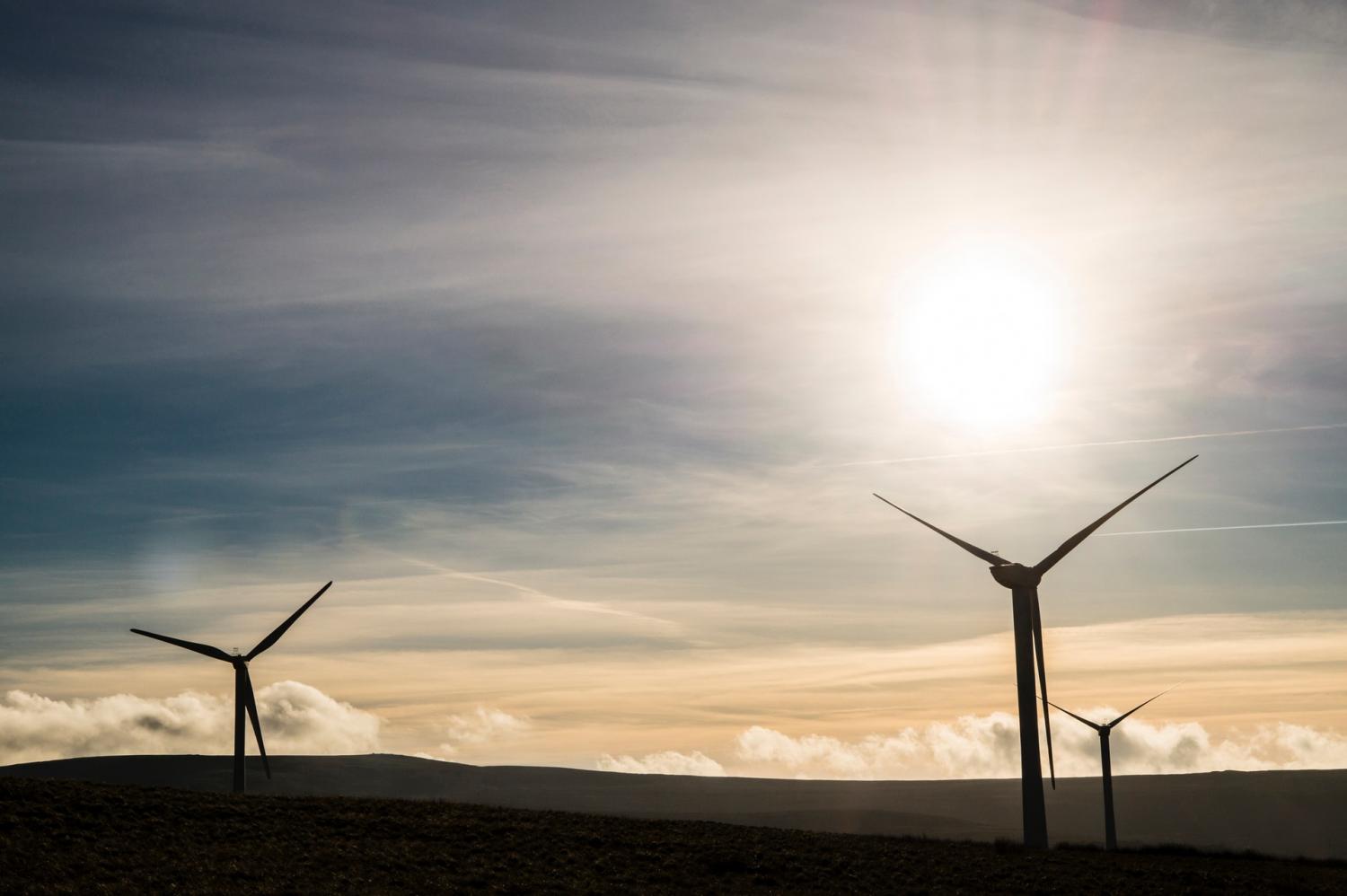
Businesses looking to raise their renewable energy profiles can look to the Estée Lauder Companies for inspiration. The umbrella for some of the top brands in personal care worldwide, Estée Lauder took its biggest single step into renewable energy in 2018, when it installed a 1-megawatt solar array at its Whitman Laboratories campus in the U.K. Now all of a sudden, the company has 22 MW of wind power in its sights for 2020.
Virtual renewable energy: as good as the real thing
Estée Lauder achieved the sharp increase in its renewable energy portfolio through what is called a virtual power purchase agreement (VPPA).
The idea is similar to a power purchase agreement. In a typical power purchase agreement, a ratepayer gets solar panels installed on their property without having to pay anything up front. They commit to purchasing the electricity (or an equivalent amount) generated by the solar panels, and they pay off the installation on a gradual basis through their monthly electricity bill. With the cost of solar power falling, the arrangement can save money overall for the property owner.
In addition, net metering programs in some states enable property owners to sell their unused electricity back to the local utility, creating even more opportunities for a bottom line benefit.
That’s all well and good, but there is a major limitation. Many electricity customers do not own properties that could accommodate solar arrays or, for that matter, wind turbines.
That’s where virtual power purchase agreements come in. VPPAs enable electricity users to claim clean power from renewable energy facilities located outside — sometimes far outside — of their own property.
In other words, the sky is the limit for companies seeking renewable energy.
Renewable energy for me…and thee
If this is starting to ring some bells, it should.
Last February, Bloomberg, Cox, Gap, Salesforce and Workday leveraged the VPPA model to claim 42.5 megawatts from a proposed 100-megawatt solar farm in North Carolina.
The deal caught attention partly because it upped the renewable energy profile of five companies with high name recognition. An even more significant element, though, was its potential for accelerating renewable energy development through the VPPA model.
With the five “anchor tenants” in hand, the solar developer was in a better position to forge ahead with the project, even though its capacity is not fully booked up. Once the new solar farm is completed, other ratepayers — including other businesses — will be able to benefit from access to clean power.
An ill wind in Oklahoma
A similar dynamic is at work in the Estée Lauder wind power deal.
The wind farm in question is the Ponderosa Wind Farm proposed by the company NextEra for Beaver County in Oklahoma.
Under the proposal, Ponderosa would consist of 80 wind turbines with a total capacity of 200 megawatts. Estée Lauder would get dibs on 22 megawatts of the total — if all goes according to plan, that is.
The problem is that the wind industry, in Oklahoma and elsewhere, has to address political opposition in addition to push back from property owners and other stakeholders.
Those stakeholders include the U.S. military, which is concerned about encroachment by wind farms on training grounds and other operations.
NextEra has already gotten burned by a new Oklahoma state law that requires additional documentation for wind farms that might run afoul of military operations. Earlier this year the company ditched plans for two wind farms totaling 320 megawatts in an area of Oklahoma affected by the new law.
Fortunately for Estée Lauder, the Ponderosa project passed muster with the Military Aviation and Assurance Siting Clearinghouse last July.
More renewable energy for the beauty industry
An unexpected monkey wrench from state policy makers is always a possibility in the months ahead. However, the support of a high profile, prestigious company with a brand like Estée Lauder at hand makes the going all the harder for critics.
In announcing the new wind farm deal, like Estée Lauder noted that it has other renewable energy contracts under its belt, but they are far surpassed by the Ponderosa project.
“The Ponderosa wind farm alone will cover more than half of the company’s global electricity footprint with renewable energy technologies, putting the company on target to meet its global 2020 Net Zero carbon emissions RE100 commitment,” the company stated.
Estée Lauder also took the opportunity to renew its commitment to science based targets for reducing greenhouse gas emissions. The science-based approach is a relatively new program that enables companies to set goals that align with the 2015 Paris Agreement on climate change and the recommendations of climate scientists.
As of this writing the Ponderosa wind project is on track to start construction in 2020.
When it does, Estée Lauder and its brands — including Clinique, Aveda, and Michael Kors, its namesake brand, among others — will reap the benefits.
Image credit: Ben Jessop/Pexels

Tina writes frequently for TriplePundit and other websites, with a focus on military, government and corporate sustainability, clean tech research and emerging energy technologies. She is a former Deputy Director of Public Affairs of the New York City Department of Environmental Protection, and author of books and articles on recycling and other conservation themes.














